Sound Division's Asian Network – Multipurpose magic for Tamarai / Sitaaray
With the opening of the Bollywood-themed Sitaaray restaurant above last year’s much vaunted pan-Asian restaurant/event space, Tamarai, entrepreneur Rohit Khattar has completed his mission to implant a two-tier multifunctional venue, with 5.1 cinema, dance venue, art gallery and corporate entertainment in London’s Drury Lane.
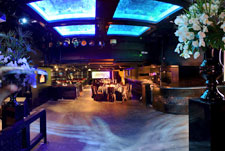
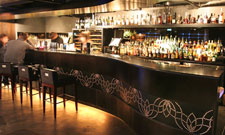
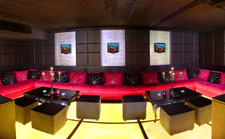
Tamarai
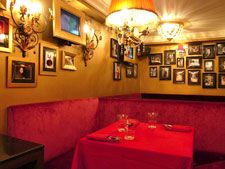
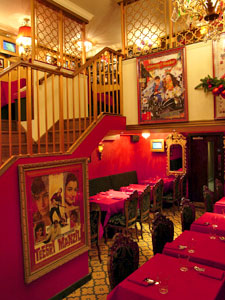
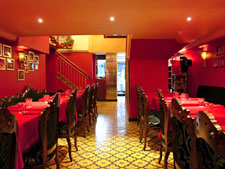
Sitaaray
'Tamarai' is derived from the Tamil word for lotus, which provides Tamarai with its theme — a fact in evidence in the entrance stairwell. Here a lotus-style fibre optic effect links the two worlds of Hindi cinema (upstairs) and corporate dining downstairs, in a reconfigurable space which can convert in an instant to its preferred mode.
To create the ultimate in flexibility was the challenge handed down to The Sound Division Group (SDG), who were recommended to parent company Old World Hospitality, and arrived on site soon after Rohit Khattar had purchased the former Millennium Club, in June 2005 with a view to providing an extravagant sister operation in London to his Chor Bizarre restaurant, which was opened in 1997.
SDG MD David Graham believes that the complex system requirement would have been much more difficult to implement had the company not been involved from the outset. The consultation process involved many meetings and accompanied visits to some of the West End's prime entertainment venues.
LIGHTING AND VISION
The slowly colour-changing lotus in the stairwell provides the curtain raiser to an inventive use of LED throughout the venue. SDG have carefully installed X-Chip LED strips around the walls of the three restaurant areas and the Lotus Lounge to provide an atmospheric colour changing effect, all centrally controlled from the dedicated AR12 unit located behind the bar.
Eight generic Par Cans and two Profile spots provide onstage illumination while another centre custom made Lotus effect hovers over the dancefloor. The unit's internal crystals reflect the changing colours of the X-Chip LED strips which are neatly concealed around the perimeter of the Lotus.
Surrounding this centrepiece are further conventional dancefloor effects, including four Ayrton EasyColor moving LED lights, three Spinmaster 3 and two Eurolite Evo-7 kaleidoscope dancefloor effects, along with a Hungaroflash strobe. All the technology is controlled via a ShowCAD Artist PC DMX system which was programmed by lighting show designer Colin Walker
Also at the stage is a Sanyo VCC9000 dome camera, with pan, tilt and zoom, controlled via a dedicated Sanyo VSP9000 programmable touch panel with joy stick control. Plug-in points around the venue allow a 'roaming' camera to be fed through the AV control system.
SOUND SYSTEM
SDG have divided the two floors into ten separate sound zones, with JBL Control series speakers, powered by Crown Xs series amplification, driven by a complex BSS Soundweb London DSP routing system and mode switcher.
Sound reinforcement for the main entertainment space consists of four JBL Control 30's, front left, front right, back left, back right configured for club sound, and one AE series AL6125 2 x 15in sub.
A further Control 29AV centre speaker, positioned behind the the main 10ft wide electric cinema screen, comes into play when the venue operates in cinema mode, and a Lexicon MC4 surround sound processor decodes all the standard cinema formats to generate the 5.1 sound system required.
Around the bar area are four JBL Control 28's and an AE series AL6115 single 15in sub. Various quantities of JBL Control 25AV speakers have been specified for the three restaurant areas and Lotus Lounge.
But the real 'intelligence' of the system is provided by the BSS Soundweb London software system — designed by specialist Soundweb programmer Martin Barbour
An HP Procurve in the main rack forms the basis of the network, split into two VLAN's — one for Harman Pro's proprietary HiQnet communication, and the other for CobraNet, running at 48kHz and 2.66ms latency.
The CobraNet-compatible Soundweb London BLU-80 handles all routing and processing responsibilities, with two BLU-32 break-in/break-out devices providing CobraNet on and off ramps to facilitate the large number of inputs and outputs in the system. A BLU-10 is also supplied for local remote control of Sitaaray
Controlled by London Architect software, any sound source can be routed to any zone in the building. The inputs include: hard drive player; Sitaaray keyboard player; stage input; cinema DVD player; six further DVD sources from Tamarai and two from Sitaaray; multiplay CD player, VHS machine and Freeview. The video sources are switched via a Kramer 16 x 16 matrix unit — along with a manual patch panel — linked to Soundweb London via RS232, with London Architect again providing the user interface.
Each audio input is either compressed or levelled before being sent to the distribution router. Each output has independent gain, parametric EQ and limiter processing, with crossovers for the subs in the main bar and cinema areas.
“The DSP routing was the most complex part of the installation in terms of client requirements and budget,” said SDG managing director, David Graham. “The client wanted to be able to show any one of the 16 video inputs to any of the 16 screens located around both Tamarai and Sataaray in any configuration.”
However, he adds that this was further complicated by the fact the client also wanted to be able to cross-fade, mix and overlay these inputs. Thus via a network of Elca video distribution amplifiers most the inputs to the Kramer are also routed directly to two Edirol V4 video four-channel mixers, with the ouputs then routed back into the Kramer switching unit.
IN THE BOOTH
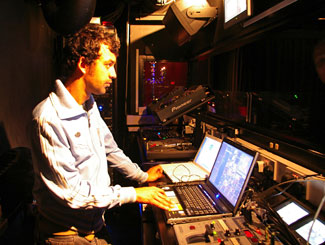

Confronting the posse of DJ's and VJ's is an easy-to-navigate set-up with full monitoring via a Numark VM03 3-screen monitor, which allows him to see inputs and outputs, and a master status graphic display overhead. The DJ has resource to a constant playlist of restaurant music provided by 8-Track Music Solutions.
Tamarai also sees the first installation of Pioneer's new DVJ-X1, which has the same functionality as the CDJ-1000 MkII but with the added capacity to play back DVDs as well as CDs, working in tandem with a Pioneer DJM-800 mixer. High-definition capabilities are offered by Denon's DVD 3910 HDMI player. Aside from the DVD's resident VJ Piku carries a series of visual loops on his laptop and uses Resolume VJ editing software. The set up allows him to separate and isolate images and all 16 inputs (including the dome camera) can be triggered from the booth — including video art for specific exhibitions.
The compactness and creativity of the Edirol V4 — with features that include beat- and frame-synching, chroma-key and Luminance-key mixing — is a major plus factor, says the VJ.
The Tamarai/Sitaaray fit-out has proven to be one of the most complex projects ever undertaken by The Sound Division Group. States David Graham: “We deployed a highly professional team on this job — from the programmers through to the installers. What we have provided the venue with is ultimate flexibility, enabling it to display Hindi cinema, visual and still art, corporate events and imaginative audio and VJ mixing. This is the epitome of what a multi-functional space should be.”
January 2007
